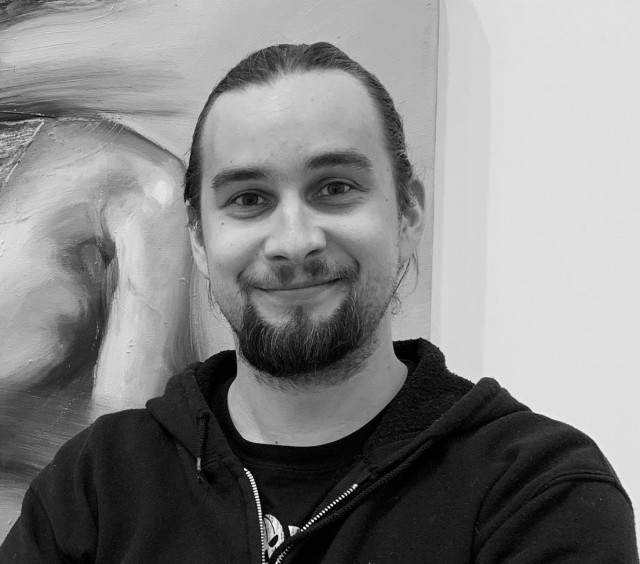Born 1986 | Lives and works in Vesilahti, Finland
Viljami Heinonen’s new exhibition Ascend Above The Heights continues the bird-themed series which Heinonen started earlier, and thus links to the range of nature-themed works of recent years. The starting point of the exhibition is the colorful bird dioramas built by natural museums, allowing compositions and static events come to life and movement in the paintings through an expressive physical painting process. The historical, beautiful and natural science contents of the dioramas evoke thoughts about life and its fragility, such as movement, stagnation, the past and the present. The conspicuous beauty of the subjects creates an interesting friction in the paintings when it is combined with a rougher, suggestive painting style.
Heinonen’s way of working is restless, intense and precise. His works are kinds of painted collages, still images whose lushly ragged exteriors in places make them look as if the fiercest of battles had been waged on their surface. Heinonen knows the recent history of art and is able to make use of what it has to offer. His works can be found in several museum, institutional and private collections including Helsinki Art Museum, Serlachius Museums, Tampere City, Heino Collection, Saastamoinen Foundation, Wihuri Foundation and Miettinen Collection.
